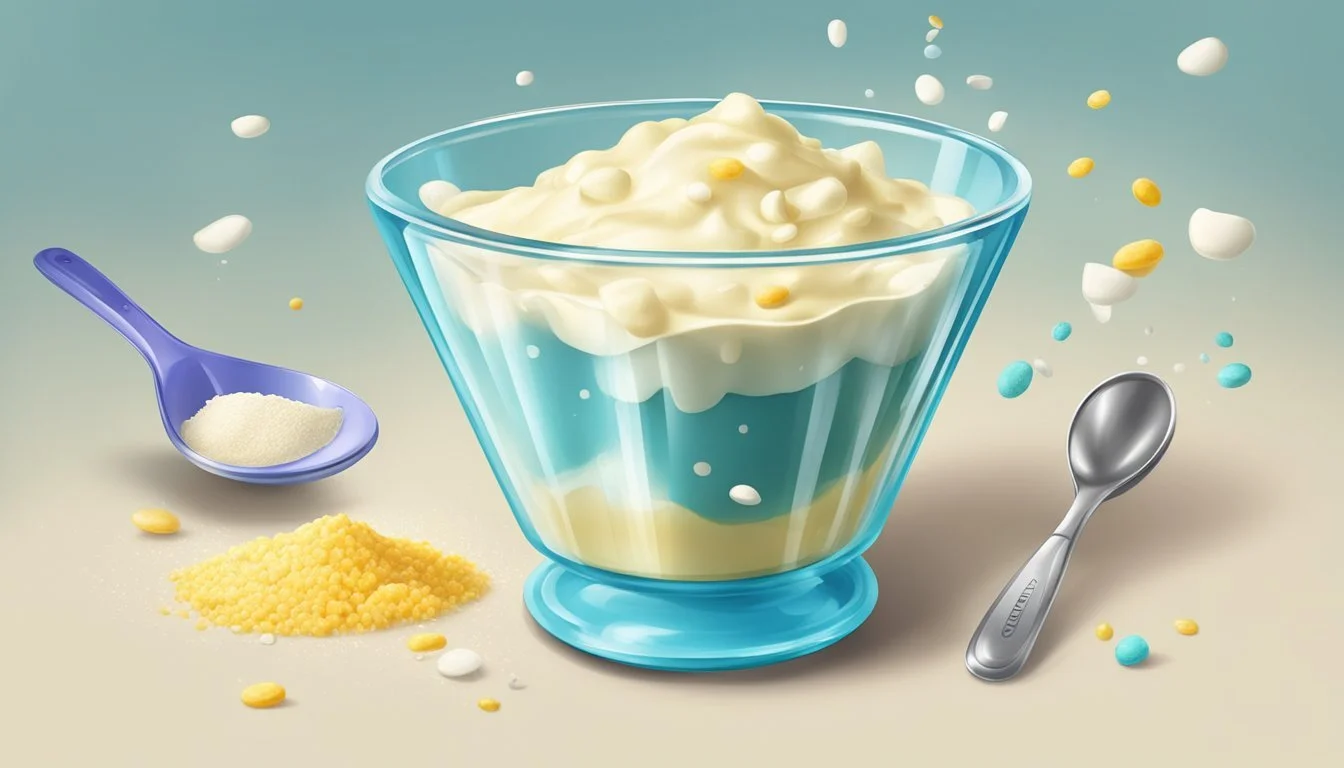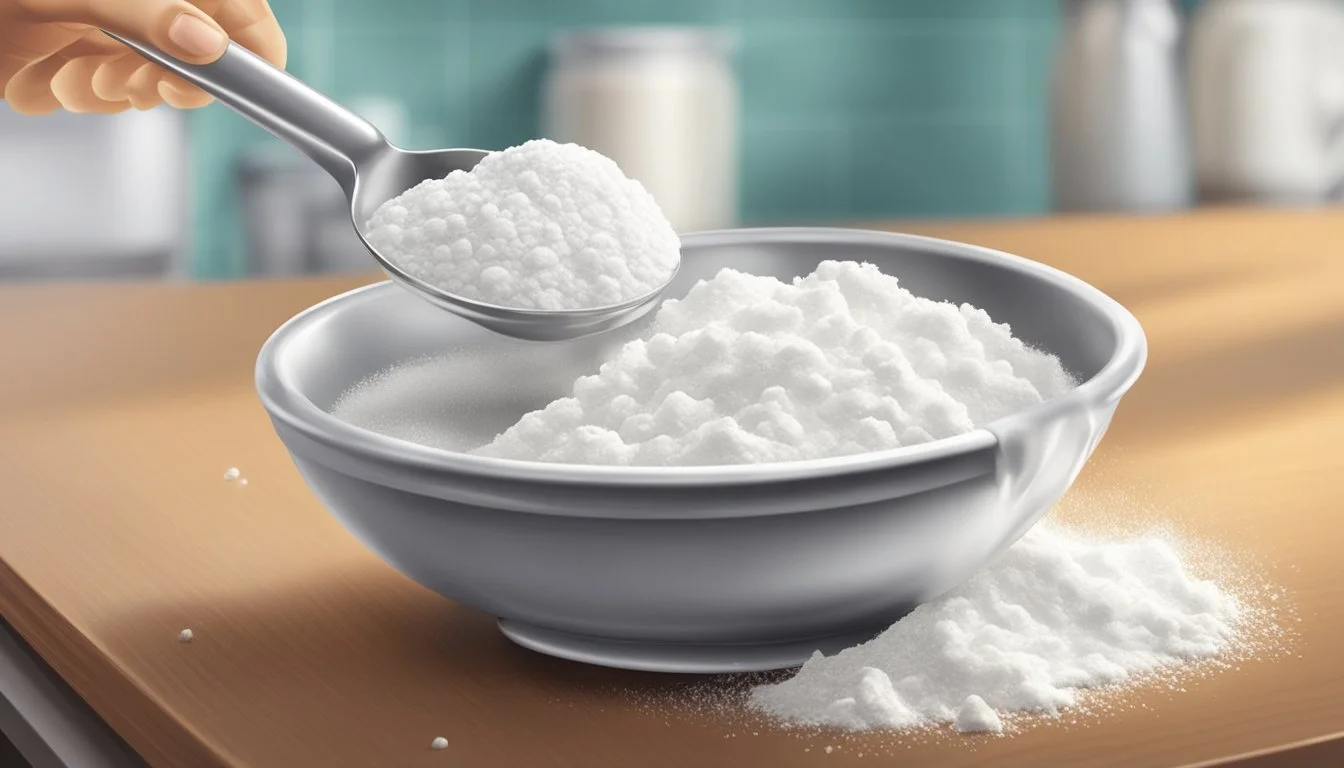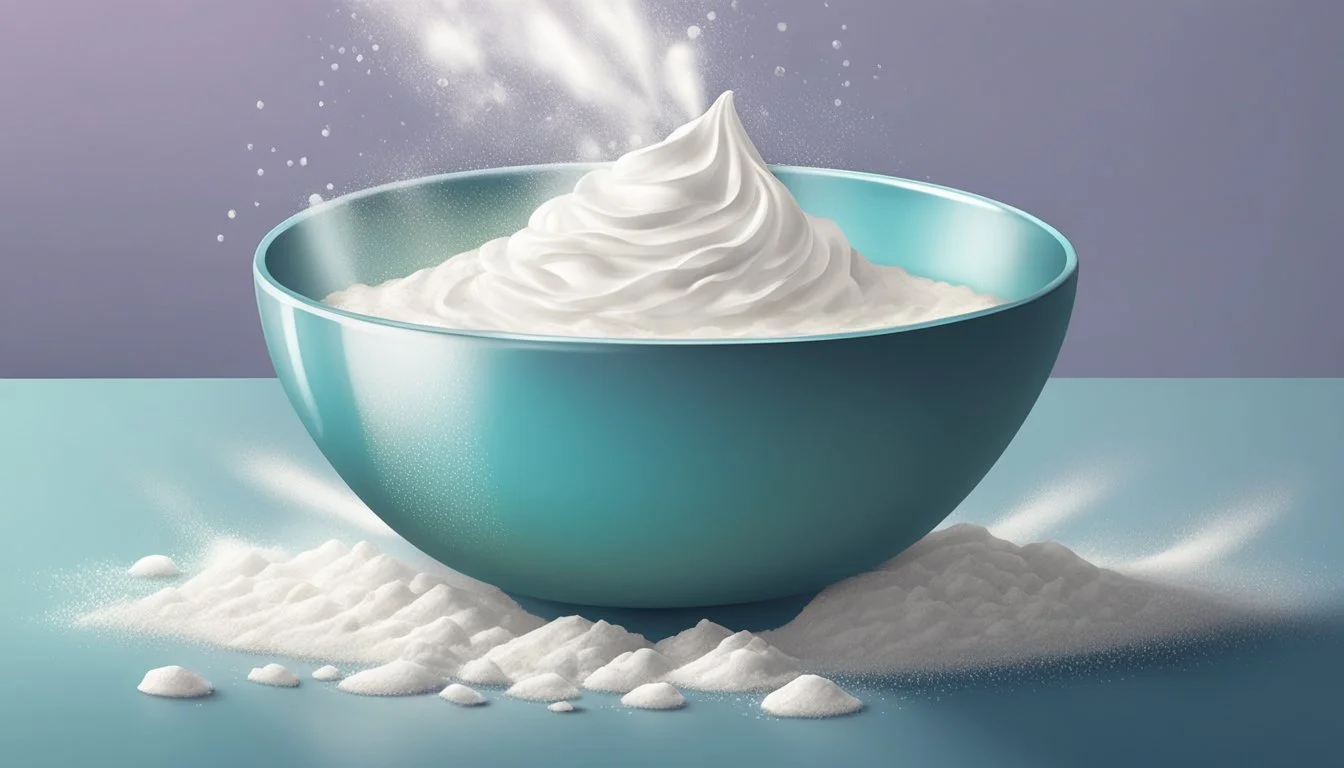How Many Tablespoons in a Pound of Cream of Tartar
Accurate Measurement Conversion
When measuring ingredients for cooking and baking, precise conversions are crucial, especially for items like cream of tartar, which is often used to stabilize egg whites or to act as a leavening agent when combined with baking soda. The conversion between weight and volume measurements can be a point of confusion, but understanding how many tablespoons are in a pound of cream of tartar will help ensure consistency and accuracy in recipes.
One pound of cream of tartar is equivalent to approximately 44.80 tablespoons. This is based on the standard that a tablespoon of cream of tartar typically weighs around 0.36 ounces (10.13 grams). Having this conversion at hand is useful for both culinary professionals who require exact measurements and for home cooks experimenting in the kitchen.
Understanding Cream of Tartar
Cream of Tartar, a powder formally known as potassium bitartrate, plays an essential role in both the chemistry of baking and the practical applications within the kitchen. This section delves into its chemical makeup, culinary uses, and the best practices for storage.
Chemical Composition
Chemically, Cream of Tartar is potassium bitartrate (KC4H5O6), an acidic salt derived from tartaric acid. It precipitates naturally through the winemaking process when grape juice ferments. This powder crystallizes at the bottom of wine barrels and is then refined for culinary use. The importance of Cream of Tartar in the kitchen is linked to its chemical properties which can affect texture and stability in recipes.
Culinary Uses
In the culinary world, Cream of Tartar has multiple applications:
Stabilizing egg whites: It increases their heat tolerance and volume, which is crucial for meringues.
Preventing sugar crystallization: Ideal for making syrups and frostings smooth.
Activating baking soda: It serves as a leavening agent when combined with sodium bicarbonate in recipes.
The kitchen utility of Cream of Tartar extends beyond these examples. It's a key ingredient in baking powder and can be used as a cleaning agent for its mild abrasive properties.
Storage and Shelf Life
To maintain its efficacy, Cream of Tartar should be stored in a:
Cool location
Dry environment
Airtight container
Under proper conditions, it can last indefinitely, though it is advisable to check for clumping or changes in texture as an indication of potential moisture exposure. Its stable shelf life makes it a convenient staple in any kitchen.
Measurement Conversions
In the culinary world, precise measurement conversions are essential for achieving consistent results. Converting pounds to tablespoons, especially for dry ingredients like cream of tartar, requires understanding the contrasting nature of volume and weight.
Pounds to Tablespoons
To convert pounds to tablespoons (tbsp) for cream of tartar, it is established that 1 pound equals approximately 44.80 tablespoons. This is an essential conversion for those following recipes that specify ingredients by weight rather than volume.
Volume vs Weight
Volume measures how much space an ingredient occupies, while weight measures its heaviness. Cream of tartar, like many powdered substances, has a set density which allows for conversion between these measurements. However, one must remember that a volume (like tablespoons) of one substance does not weigh the same as the same volume of another substance due to different densities.
1 tablespoon of Cream of Tartar weighs approximately 10.13 grams (or 0.36 ounces).
1 teaspoon weighs approximately 3.4 grams (or 0.12 ounces).
Conversion Tools
For cooks and bakers seeking to convert measurements with ease, utilizing a conversion calculator can provide quick and accurate results. They simply enter the value they wish to convert and select the appropriate measuring units. Furthermore, a precise scale may be used to measure the weight of an ingredient, which can then be converted to volume if needed.
It is important to use these tools and conversions accurately to ensure the desired outcome in recipes calling for cream of tartar or any other ingredient where measurement precision is key.
Cream of Tartar in Baking
Cream of Tartar, or potassium bitartrate, plays a crucial role in baking recipes. Its acidic nature interacts with other ingredients to affect texture and stability.
Role in Baking Recipes
Cream of tartar is a fine, white powder often used in baking as a leavening agent when combined with baking soda. It's a component of baking powder. In recipes, it serves as an acid that reacts with alkaline baking soda to release carbon dioxide gas, which helps dough and batters to rise. This reaction is essential in making lighter and fluffier baked goods. It's particularly useful in recipes such as meringues because it helps to stabilize the egg whites, increasing their heat tolerance and volume.
Substitutes for Cream of Tartar
If a recipe calls for cream of tartar and it's unavailable, there are substitutes that can mimic its effects. For every 1/2 teaspoon of cream of tartar, one could use 1 teaspoon of lemon juice or white vinegar. These alternatives provide the necessary acidity for the chemical reaction in recipes involving baking soda. It is important to note that these substitutions may slightly alter the taste or properties of the final product.
Effect on Baked Goods
Cream of tartar's primary function is to stabilize egg whites in recipes like meringues, assuring they achieve maximum volume and hold their shape. It also prevents sugar syrups from crystallizing, which is advantageous for candy and frosting recipes. In snickerdoodle cookies, cream of tartar imparts the characteristic tangy flavor and chewy texture. When used with all-purpose flour, it improves the texture and volume of cakes and biscuits by interacting with the protein structure, adding to the overall leavening process alongside yeast or other agents.
Nutritional Information
This section provides specific information on the nutritional profile of cream of tartar, detailing the health benefits and dietary role, along with its caloric and nutrient content.
Health Benefits and Dietary Role
Cream of tartar plays a minor but useful role in the diet, primarily used in cooking and baking. It is a byproduct of wine production and is essentially potassium bitartrate. Although cream of tartar is not a significant source of vitamins or minerals, it can serve as an important element in baking by stabilizing egg whites and increasing their heat tolerance. It is also used to prevent the crystallization of sugar in candies and to add volume and creaminess in baked goods.
Caloric and Nutrient Content
In terms of caloric and nutrient content, cream of tartar contains a negligible amount of fat and protein. The following table illustrates the nutritional content for a typical serving size of cream of tartar.
Nutrient Amount per 1 tsp FDA Daily Value* Calories 8 <1% Fat 0g 0% Sodium 1.56mg <1% Carbohydrates 1.84g <1% Sugars 0g 0% Protein 0g 0%
*Based on a 2,000 calorie diet
Despite its low nutritional values in terms of macronutrients like protein and fat, cream of tartar is high in potassium. However, because it is used in such small amounts, cream of tartar does not significantly contribute to the daily intake of potassium for an average adult. Cream of tartar has no notable content of vitamins, magnesium, zinc, calcium, iron, or copper in typical amounts used in cooking and baking. Consumers should consider cream of tartar as a functional ingredient rather than a nutritional supplement. The FDA has not established a Daily Value for cream of tartar.
Practical Tips and Techniques
The precision in measuring cream of tartar is crucial for successful cooking and baking. Accurate measurements ensure the chemical reactions it instigates, particularly in baking, turn out as intended.
Measuring Cream of Tartar Accurately
To measure cream of tartar accurately, one must use the right tools. A kitchen scale is highly recommended for precision. If a recipe calls for a pound of cream of tartar, this equates to approximately 44.80 tablespoons. For smaller quantities, use standardized measuring spoons, leveling off the powder with a knife to ensure accuracy.
Common Baking Mistakes
A common mistake in baking is mis-measuring dry ingredients like flour, starch, and agents like cream of tartar. To avoid this:
Fluff up the flour before using.
Spoon the cream of tartar into the measuring spoon and level off.
Never scoop directly from the container as this can compact the ingredient, leading to overuse.
Professional Advice from Chefs
Chefs often stress the importance of adhering to recipes, especially with ingredients that affect texture and stability, such as cream of tartar. They offer feedback like:
Use the spoon-and-level method for all dry ingredients.
Ensure butter is at the correct temperature and consistency as specified.
Incorporate ingredients such as eggs and milk at room temperature to achieve a homogeneous mixture.
By adhering to these techniques, one can ensure the quality and consistency of their culinary creations.
Other Uses for Cream of Tartar
Cream of tartar, or potassium hydrogen tartrate, is recognized not just for its role in baking and stabilizing whipped cream but also for its versatility around the house and in DIY remedies.
Beyond Baking
Cream of tartar serves several purposes outside the realm of baking. It can act as a stabilizing agent for whipped cream, helping it hold its shape and preventing early collapse. In winemaking, it plays a role in the crystalizing process, where it can form as wine diamonds on corks or in the wine itself. Interestingly, cream of tartar can also be used to polish aluminum surfaces due to its mildly acidic nature, resulting in a clean and shiny finish.
Stabilizer for whipped cream: Helps maintain the structure and fluffiness.
Winemaking: Influences the tartaric acid content in wines, contributing to their crispness.
Aluminum polish: Cleans and shines aluminum when combined with a mild acid like vinegar or lemon juice.
Home Remedies and DIY Solutions
In home remedies and DIY solutions, cream of tartar shows its multifaceted utility. It can be combined with vinegar or lemon juice to create natural cleaning solutions for household items. As a paste, it can be applied to various surfaces to remove stains and discoloration. For example, mixing cream of tartar with lemon juice can effectively tackle ink stains on clothing or carpets. Additionally, cream of tartar mixed with table salt offers a non-toxic play dough alternative for kids, ensuring safety during playtime.
Natural cleaning agent: Mix with vinegar or lemon juice for an eco-friendly cleaning solution.
Stain removal: Combine with lemon juice to form a paste that lifts ink stains from fabrics.
Play dough substitute: Safe and non-toxic play dough can be made using a mixture of cream of tartar, salt, flour, water, and vegetable oil.
By harnessing these various uses, cream of tartar extends its role from a simple baking ingredient to a valuable component in everyday household and personal care tasks.
Purchasing and Availability
When searching for cream of tartar, customers will find it widely available and offered by various brands, which impacts the price. Knowing where to find and how to compare options helps in making an informed purchase.
Finding Cream of Tartar
Cream of tartar is readily obtainable in most grocery stores within the spices or baking ingredients section. For those in the culinary industry or individuals requiring bulk amounts, it is also accessible in larger quantities such as kilograms, quarts, liters, or gallons. This powdery byproduct of winemaking is essential for imparting a tangy flavor to dishes and stabilizing sugar to prevent crystallization in something like caramel.
Comparing Brands and Prices
When comparing brands, prices can vary. Factors influencing cost include brand recognition, packaging size, and whether the cream of tartar is organic. Here is a simple comparison chart for reference:
Brand Size Price Range Organic (Y/N) Brand A 100g $3 - $4 Y Brand B 200g $5 - $7 N Brand C 1kg $15 - $20 Y
Consumers should note that while some brands may offer lower prices, it does not necessarily reflect on the quality of the product. It's important to read labels and reviews to gauge the overall value they are getting for their money.









